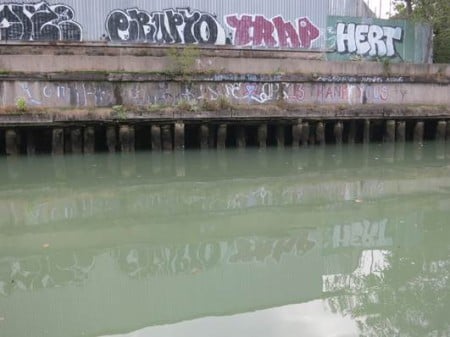Not a Good Day to Be a Fish in the Newtown Creek

Newtown Creek on October 13, 2014. Photo by John Lipscomb / Riverkeeper.
View more images on our Flickr site
Two days after the last Newtown Creek Alliance CSO Alert, the water appeared grey/green Monday, as Riverkeeper patrolled the creek. Our onboard lab measured 1% dissolved oxygen – fatal for marine life.
Low dissolved oxygen is related to the frequent, huge discharges of sewage during rain events throughout New York City. These sewage discharges are particularly harmful for bodies of water like Newtown Creek, where there is little tidal mixing and dilution.
CSOs cause problems in at least two ways – by adding nutrients (primarily nitrogen and phosphorus) and bacteria to the creek.
Added nutrients promote excessive growth of algae. When the algae dies, it sinks and is decomposed at the creek bottom by bacteria that consume oxygen. Sometimes on Newtown Creek we see very high levels of oxygen at the surface because of algae blooms. At the bottom, we generally see extremely low oxygen – too low to support fish.
Algae blooms, which are more common in sunny periods (summer) were absent on the day we took the photo. However, the greenish color of the water may have been due to algae, though in numbers shy of a full-fledged bloom.
The bacteria delivered in large numbers in CSO discharges also consume oxygen, contributing to oxygen depletion in Newtown Creek.
